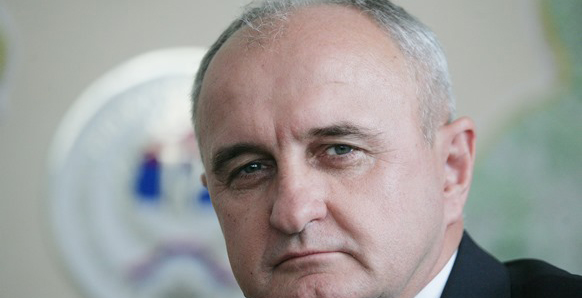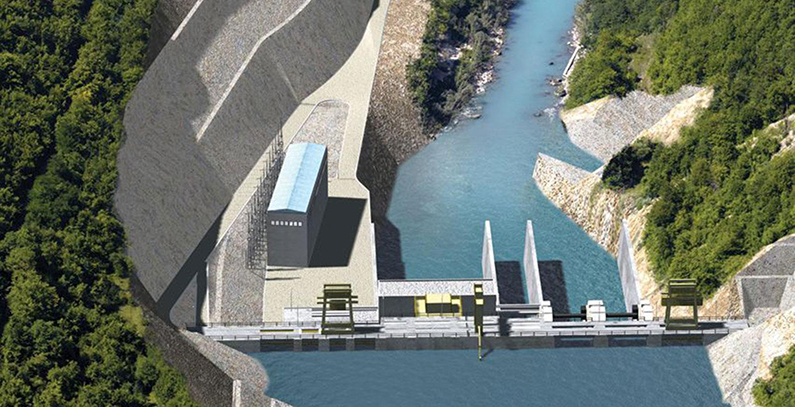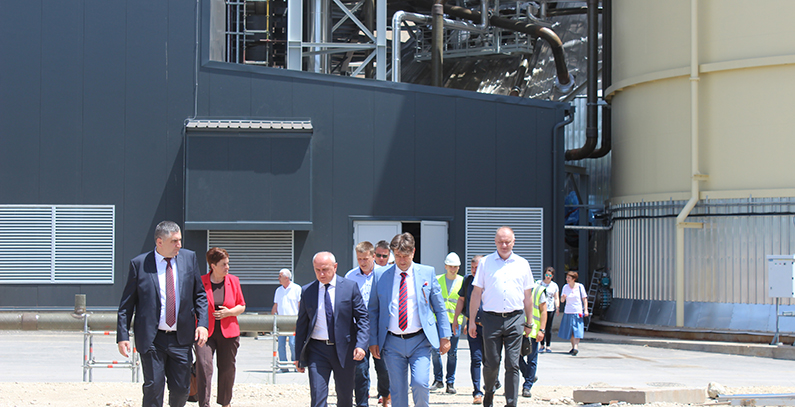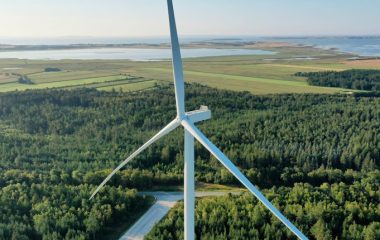
Photo: Government of Republika Srpska
Share
Republika Srpska plans to introduce auctions for the construction of hydropower and solar power plants, as well as to continue using its power generation resources, including small and large hydropower plants and lignite-fired power plants. In an interview with Balkan Green Energy News, Petar Đokić, Minister of Energy and Mining of Republika Srpska, says that he is aware of the Energy Community Secretariat’s warnings and global intentions to curb fossil fuel power plants, but that he is convinced that the application of state-of-the-art technologies at coal power plants will ensure environmental protection standards are observed.
The Banja Luka District Court recently canceled the environmental permit for the construction of HPP Buk Bijela. Objections have been raised over the environmental impact assessment study. How do you comment?
It is of special significance for us that we have made the important decision to carry out the construction of hydropower plants on the Upper Drina together with Serbia. It had previously been planned for these projects to be carried out within Republika Srpska, by its power utility Elektroprivreda Republike Srpske (ERS). It is important to note that the preliminary design for HPPs Buk Bijela and Foča was produced in 2012 and later revised, and that certain corrections were made following the revision. Experts at Serbia’s power utility Elektroprivreda Srbije (EPS) are now reviewing the project, to be followed by determining the pace of implementation.
Elektroprivreda Srbije (EPS) is currently reviewing the project for HPPs Buk Bijela and Foča, to be followed by determining the pace of implementation
When it comes to approvals and permits for the construction of these hydropower plants, it should be noted that the environmental permit was issued in an earlier period and that the extension procedure, i.e. the issuance of a new environmental permit, will either be extended or a new request will have to be filed for a new environmental permit and the complete issuance procedure carried out. I do not expect any new problems and delays concerning this matter. I believe that all standards required when planning the construction of such energy facilities will be observed under the preliminary design and as such meet all environmental norms. I, therefore, see no reason why this matter should stall the project’s realization and the construction of these hydropower plants.
When could construction begin?
The project has practically been prepared. Of course, all relations that need to be regulated within the concession company need to be defined in detail. It should be noted that the Government of Republika Srpska had earlier awarded the concession for the construction of HPP Buk Bijela to ERS, however given that the governments of Republika Srpska and Serbia have decided to jointly work on these projects on the Upper Drina, the plan is for Serbia to have a 51% stake and Republika Srpska a 49% holding in the concession company for the construction of the power plants.
HPPs Buk Bijela and Foča will be built under the EPC plus financing model
Of course, many other important issues need to be defined, including the selection of a partner on the projects. It is planned for these projects to be implemented under the turnkey Engineering, Procurement and Construction (EPC) plus financing model. Over the past two years, discussions were held in Republika Srpska with a number of companies that expressed interest in the construction of these HPPs. These companies continue to express readiness to participate in the process to select the company to carry out the project under the model I mentioned. We hope that this phase too, once we reach it in the fall of this year, will be successfully completed and that we will select the company capable of carrying out the works as well as offering financing for the project.
I believe that it will be particularly important for Republika Srpska and the project as a whole that our partner be a company that can offer the most favorable terms for the realization and construction of these HPPs, i.e. offer us complete financing, provide guarantees it can carry out the works, the most favorable deadline terms, and, of course, provide guarantees of the quality of executed works. Given the discussions we have had, we expect that these power plants can be built within four years at the most, possibly a shorter period, counting from the day the contractor can start construction.

The construction of small hydropower plants (SHPPs) has been subject to controversy in the region. Some states, such as Albania and Montenegro, have launched procedures to review the issued permits. What does Republika Srpska intend to do?
Republika Srpska has an interest in continuing the construction of small hydropower plants (SHPPs). A total of 16 with a combined installed capacity of 73 MW have been built so far and they are all operating in a satisfactory regime. The construction of a further 16 SHPPs is under way. Some of them will be completed this year, and some next year. This will certainly improve our balance in terms of green energy production, confirming that Republika Srpska has a stable and safe investment environment.
We will continue to analyze all the SHPP concession agreements concluded over the past period – there are about 90 such agreements
We have recently severed several agreements with concessionaires that had failed to meet contractual terms, i.e. failed to launch the projects subject to the concessions, over a long period of time. We will continue to analyze all the concession agreements concluded over the past period – there are about 90 such agreements – and take the same steps against all those that have failed to meet their obligations under the concession agreements. Even if the agreements are terminated, however, this does not mean that we will give up on the locations in question. On the contrary, we will invite fresh bids for concessions for all of the locations for which adequate viability and feasibility studies have been conducted.
The process of building a SHPP is not simple. I believe that it is simpler to obtain a concession agreement than to build a power plant, which is why I am highlighting the second, construction phase. This phase usually takes longer than the preparation. However, we believe that many concessionaires will manage to realize their concession agreements, as they certainly have an interest in doing so. Our goal with all these renewables projects is to increase the share of power produced from renewable energy sources.
Republika Srpska has adopted a new Law on Renewable Energy Sources, abolishing feed-in tariffs for wind farms. How do you intend to attract investments in renewables?
We have recently changed the Law on RES and abolished subsidies, the so-called feed-in tariff for wind power plants. The reason for this change was the need to be able to regularly service commitments to recipients of subsidies for the produced green energy in the future. We believe that power obtained from wind power plants should no longer be subsidized because there has been a significant change in the prices of equipment needed to build a wind power plant. The fact is that the price, i.e. value of equipment for wind power plants changes within a single calendar year, from January to December. For that reason, all investors, i.e. concessionaires to build wind power plants in the period ahead have an interest in assuming the entire risk of a project to build a wind power plant.
We will define new incentive schemes for renewables under the new Law on Electricity, which should be adopted by the end of the year
One of such concessions has been awarded to a partner that has committed, even before the law was changed, not to use incentives, which only confirms that the Government made the right decision, which was then adopted by the Parliament through changes to the law. It should be noted that the subsidy system will be maintained for SHPPs, small solar power systems, and for biomass power plants. The Action Plan expires next year and we will regulate a range of important energy issues, including incentive schemes, under the new Law on Electricity, which has reached the Government’s agenda, after which it will be submitted to the Parliament, and I expect it to be adopted by the end of the year. In this way, we will join other Energy Community Contracting Parties that are either preparing or already applying the new incentive schemes.
What could the new model look like?
The key development expected from the application of the new model is the introduction of the auction model. Based on available funds for incentives, all those meeting requirements will be able to take part in bidding, to be followed by the selection of those that will create conditions to use the incentives, and allocation.
How do you intend to meet environmental standards in coal power generation?
We are aware of the significance of the decarbonization process, which Republika Srpska has already entered. We are close to completing a very important project, worth around EUR 80 million, which concerns the installation of a flue gas desulfurization system at the Ugljevik thermal power plant (TPP). The system will be put into operation on November 1, demonstrating Republika Srpska’s high level of responsibility and very clear and concrete contribution to environmental protection, which will not only have positive effects on the thermal power plant’s surroundings, but will also have a significantly wider environmental impact given that lignite used by TPP Ugljevik for power generation has the highest percentage of sulfur of all types of lignite used in the region.
The flue gas desulfurization system at TPP Ugljevik will have a significantly wider environmental impact given that its lignite has the highest percentage of sulfur of all types of lignite used in the region
Flue gas desulfurization was a necessary process that TPP Ugljevik accepted, after it was initiated and approved by the Government of Republika Srpska with the intention of consistently meeting its obligations under the National Emission Reduction Plan (NERP). The system will make it possible for TPP Ugljevik’s power production facilities to operate until 2035. Without the flue gas desulfurization system, the plant’s electricity production would have to be halted, possibly by 2025. I would also note that the project was financed with lending approved by the Government of Japan.

Despite everything, you will continue to invest in coal power plants?
We plan to build two new coal power units that will replace the existing units at TPP Ugljevik, namely TPP Ugljevik 3 and TPP Gacko 2. A while back, Russia’s Comsar started preparations for the Ugljevik 3 unit and the company has so far invested significant funds into the project. The company also has a concession agreement for a hydropower plant (HPP) in the Herzegovina area, the location of Mrsovo. Comsar is currently reviewing activities and planning new ones concerning the method and model to fully realize the project.
Comsar is planning new activities concerning the method and model to fully realize the TPP Ugljevik 3 project
Concerning the Gacko 2 project, we are in the phase of registering a new company that would be in charge of building TPP Gacko 2 and the procedure is being carried out with Chinese partners. It has not been completed yet but I hope it will be successfully realized.
You don’t expect problems with securing financing for these projects? Also, the Energy Community Secretariat has had numerous objections concerning the Tuzla 7 coal power project, which is similar to projects planned by Republika Srpska.
We are ready to secure both partners and financing through the partnership for both projects in Republika Srpska. We are aware that there are limitations originating in energy circles of Europe or globally, in terms of curbing electricity production from fossil fuels. However, the use of fossil fuels is not only an environmental issue but also a matter of the sustainability and security and safety of electricity supply. This is why energy facilities using coal as their main fuel must still be maintained.
I am convinced that conditions are in place to build new coal power plants by applying state-of-the-art technologies and that this will not have an adverse impact on environmental protection
Of course, when building new thermal power plant facilities – and I underline this – we are taking into account all obligations concerning environmental protection and the application of state-of-the-art environmental standards. They will be secured during the design phase and the construction of TPPs by using equipment designed to directly help protect the environment and prevent excessive pollution. I am convinced that conditions are in place to realize these projects in Republika Srpska by applying state-of-the-art technologies and that the realization of such projects will not have an adverse impact on environmental protection.
The use of fossil fuels is the base of many countries’ economic life, including ours
In any case, we – and other countries – for example Poland, Romania, Bulgaria and some other countries in the region, have TPPs, or are in the phase of building new ones, not because they seek to defy someone or go against the latest trends in the energy sector concerning electricity production from renewable energy sources, but because the use of fossil fuels is the base of many countries’ economic life, including ours. In that context, we are ready for full cooperation concerning the application of all environmental and other standards applied today when designing and building energy facilities.









Be the first one to comment on this article.